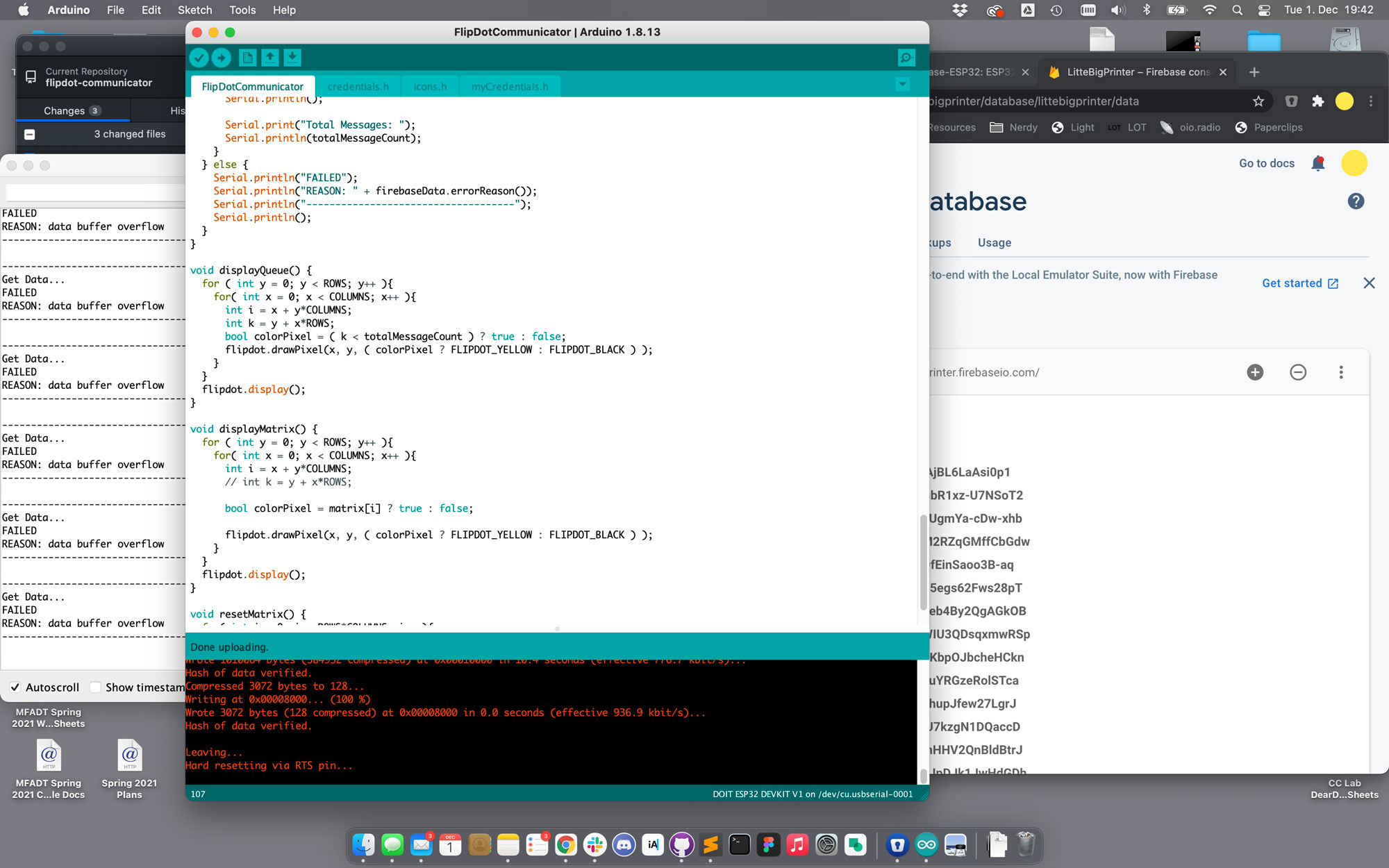As mentioned I refactored the website from the firestore to the realtime database. It was way faster than I anticipated.
Also, I was able to combine the libraries and got the ESP32 running with the realtime database from Firebase.
When running the program, I realized that the flip dots get extremely hot when triggered too often, especially as I had the matrix displayed every run of the loop(), which is multiple times per second, the example only did an update every 400ms. Hence I needed to refactor the code that the screen would only update when necessary (especially, as it otherwise is not even useful, switching from black to black). This brought also the benefit of getting rid of a small ticking sound, like a clock, as the magnets were fired constantly.
I then started to refactor the database. It now is able to send arrays as well, allowing to process the content entirely on the website. The new MatrixDraw component enables visitors to send draw and send own images in this very limited resolution.
Find the code → here

Next Issues
The next big issue seems to be the buffer. I can only read so many data entries per call, which will eventually be an issue when getting to sending more complex matrixes.
Especially, when sending animations this will be a problem. I don’t know if I am able to figure this out in the time given by the deadline.
Additional
I stumbled upon this repository by Julian Hespenheide, which is explaining flip dots quite thoroughly, in case you want to know more! (I found it too late, unfortunately…)
Currently the studio Julian Hespenheide works at, is having an exhibition displaying a flip dot display. Read more about it at the studio’s website: Studio TheGreenEyl.